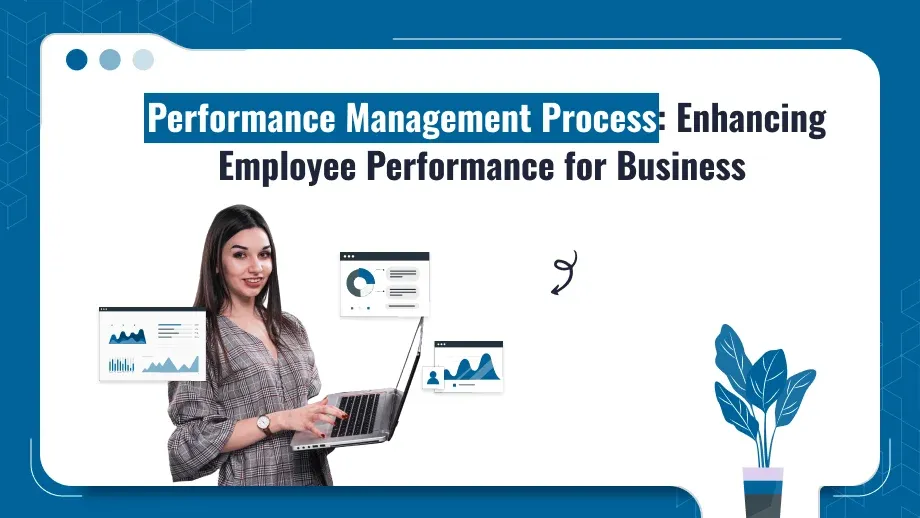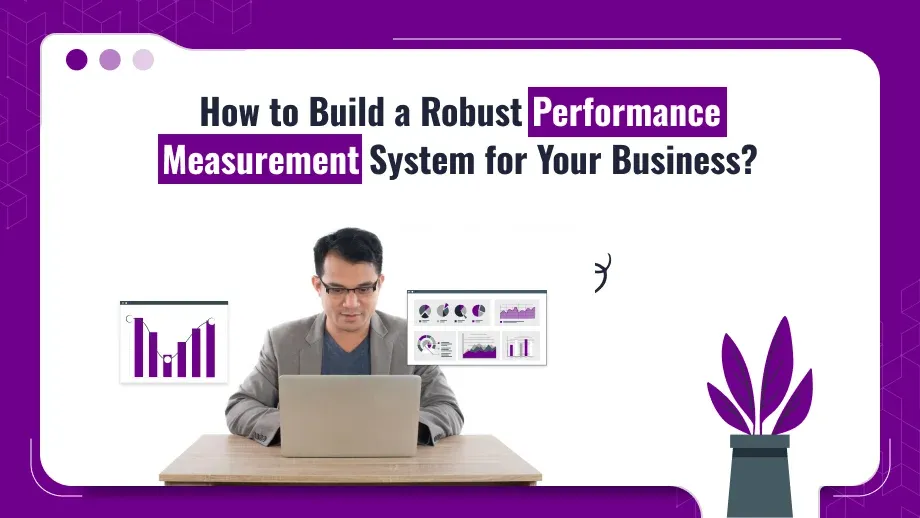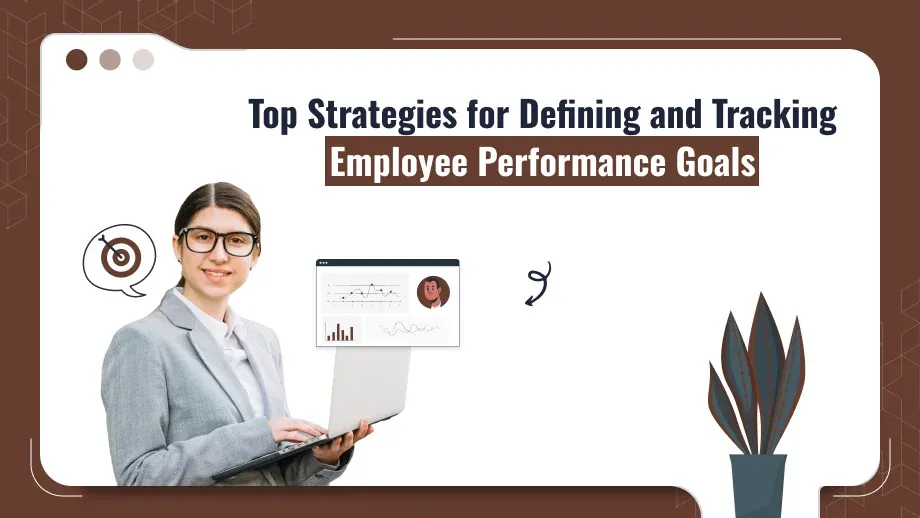
In today’s competitive business world, implementing performance management has become an essential part of evaluating organizational success. Beyond only carrying out annual performance reviews, it is an ongoing process that helps align individual ambitions with the organization’s overall objectives. A robust performance management strategy that involves staff, encourages continuous feedback, and fosters a responsible culture ultimately leads to higher productivity and job satisfaction. This blog will go into great length on the significance of the performance management process, its key components, and best practices for implementation.
What is the Process of Performance Management?
Organizations use the performance management process as a methodical way to improve overall performance by coordinating individual contributions with corporate objectives. The main phases in this process are usually planning, carrying out, monitoring, and reviewing. Every stage is essential to guaranteeing that staff members understand their roles and are given the assistance they need to accomplish them.
Important Elements of the Process of Performance Management
- Establishing Goals: This is the basis of the process of performance management. Both the company and its employees need to have clear, quantifiable, and attainable goals. To make sure that everyone is working toward the same goals, businesses might develop SMART (Specific, Measurable, Achievable, Relevant, Time-bound) objectives.
- Mechanisms of feedback: Feedback on a regular basis is crucial for ongoing development. Companies should encourage a culture in which employees receive feedback on a regular basis in addition to during official performance assessments. Peer evaluations, coaching sessions, and casual check-ins are a few examples of this.
- Metrics of Performance: Organizations can assess employee performance objectively by using key performance indicators (KPIs). These criteria must to be properly conveyed to staff members and be in line with the organization’s overarching objectives.
- Growth and Instruction: Performance management include both development and evaluation. Fostering growth requires identifying skill gaps and giving staff members the tools they need to perform better.
- Appreciation and Incentives: Employee motivation and morale are raised when their efforts and accomplishments are acknowledged. This can be accomplished through official recognition initiatives or unofficial compliments from peers and supervisors.
The Performance Management Process’s Four Steps
Performance management planning, execution, monitoring, and evaluation are the four primary processes that make up the performance management process. Implementing a successful performance management system requires an understanding of these processes.
1. Planning
The planning phase sets the groundwork for the entire performance management process. During this step, organizations should focus on:
- Choosing Positions and Duties: Clearly define each employee’s duties and responsibilities. Everyone will be able to comprehend their contributions to the organization’s goals thanks to this clarity, which also helps to avoid confusion.
- Building Goals: Establish clear objectives for the company and its staff. To guarantee that all efforts are directed toward the same end, these objectives must to be in line with the organization’s mission and vision.
- Recognizing Essential Skills: Assess the abilities and proficiencies needed for workers to accomplish their objectives. Offering chances for focused training and development will be made easier with this identification.
- Making a Plan for Performance Development: Create a strategy that specifies how performance will be evaluated, along with the instruments and techniques that will be employed to gauge advancement.
2. Execution
When the planning phase is completed, the implementation phase begins. Employees carry out their everyday responsibilities while pursuing the objectives established at the planning stage. Important facets of this stage consist of:
- Execution of Plans: Workers should have access to the resources, equipment, and training they need to do their jobs well. Supervisors should make sure staff members are aware of their goals and how crucial their contributions are to the success of the company.
- Ongoing Assistance: By giving their staff constant support and direction, managers play a critical role during the execution phase. This might entail offering staff coaching, mentorship, and assistance with any challenges they might have.
3. Monitoring
Employee progress toward their objectives is tracked as part of the continuous monitoring process. Good monitoring guarantees that workers are headed in the proper direction and permits prompt corrections when needed. Important components of this stage consist of:
- Constant Inspections: Regular one-on-one meetings between managers and staff are necessary to talk about progress, offer criticism, and resolve any issues. Employees are able to communicate openly and share their triumphs and problems thanks to these check-ins.
- Performance Indicators: Employers may objectively assess employee performance by using KPIs. These measurements have to be in line with the objectives established in the planning stage, offering a precise standard by which to measure advancement.
- Managing Goals and Approaches: Goals or methods may need to be modified if staff members run across problems or if conditions change. To guarantee ongoing growth, managers should be adaptable and prepared to change strategies as needed.
4. Reviewing
The reviewing phase is critical for assessing overall performance and determining areas for improvement. This phase typically includes:
- Evaluation of Performance: To assess an employee’s performance over a given time frame, conduct formal performance evaluations. Ratings, qualitative comments, and conversations on accomplishments and potential areas for development may all be a part of this evaluation.
- Remarks and Acknowledgment: Give staff members constructive criticism that emphasizes their areas of strength and growth. Acknowledging accomplishments raises spirits and motivates staff to keep up their best work.
- Examining Data: Examine performance data to find patterns and areas that need work. Decisions about training requirements, raises, and promotions can be influenced by this analysis.
The Importance of the Performance Management Process
Implementing a robust performance improvement techniques process offers numerous benefits for organizations. Here are some key reasons why organizations should prioritize performance management:
1. Alignment of Goals
Employee efforts are guaranteed to be in line with corporate goals when a performance management process is properly organized. Employees are inspired to strive toward shared objectives by this alignment, which gives them a feeling of purpose.
2. Enhanced Employee Development
Performance management encompasses more than just evaluation; it also emphasizes Business Management Performance and personnel development. Organizations may assist staff members in developing in their positions and advancing their careers by identifying skill gaps and offering training opportunities.
3. Enhanced Interaction
Open communication between managers and staff is encouraged by effective performance management. Frequent feedback sessions promote openness and trust, which increases employee engagement.
4. Enhanced Efficiency
Employees are more likely to do their best work when they get regular feedback and encouragement. By making sure workers feel appreciated and inspired, a good performance management procedure may increase output.
5. Making Decisions Based on Data
Decision-making may be aided by the useful data produced by performance management procedures, especially when tracking employee performance. Businesses may utilize this information to spot patterns, deal with poor performance, and decide on training and promotions.
6. Decreased Turnover
Performance management-focused organizations often have lower attrition rates. Employees feel appreciated and are less inclined to quit the company when regular feedback is given and accomplishments are acknowledged.
7. Developing a Positive Work Environment
A positive organizational culture is a result of putting in place an efficient performance management procedure. Employee engagement and happiness are increased in an environment that values ongoing feedback, acknowledgment, and growth.
Implementing an efficient performance management procedure may revolutionize your company!
Find out how our solutions help boost success and employee engagement
Challenges in Implementing the Performance Management Process
While the performance management process offers numerous benefits, organizations may encounter challenges during implementation. Some common obstacles include:
1. Resistance to Feedback
Feedback may be met with resistance by staff members, particularly if they interpret it as criticism. It will take a cultural change toward candid communication and helpful criticism to overcome this opposition.
2. Inconsistent Application
Perceptions of unfairness may arise from inconsistent use of the performance management process. All managers should receive training in efficient performance management methods, according to organizations.
3. Time Constraints
Among their other duties, managers frequently find it difficult to commit enough time to the performance management process. Performance management should be given top priority by organizations, and managers should be given the tools they need to carry it out successfully.
4. Cultural Barriers
The perception and delivery of feedback can be influenced by cultural variables. Companies should modify their performance management procedures in accordance with cultural variances.
Top Techniques for an Effective Performance Management Procedure
The following best practices should be taken into account by businesses in order to optimize the efficacy of the performance management process:
1. Clearly define your expectations
Make certain that staff are aware of their jobs and duties by clearly communicating performance objectives. Accountability is facilitated by the establishment of clear objectives and performance indicators.
2. Foster a Feedback Culture
Promote a continual feedback culture where staff members are at ease providing and receiving feedback. Performance can be enhanced and engagement raised as a result of this culture.
3. Utilize Technology
Leverage best performance management systems to streamline processes, track performance data, and facilitate communication. Technology can help organizations monitor progress and provide real-time feedback.
4. Provide Training and Support
Provide managers with instruction on efficient performance management methods. Success depends on giving managers the abilities they need to carry out efficient performance evaluations and offer feedback.
5. Recognize and Reward Performance
Put in place appreciation programs that honor the efforts and accomplishments of staff members. Employee morale is raised and they are inspired to keep doing well when their performance is acknowledged.
6. Review and Modify Frequently
The method of performance management need to be adaptive and fluid. To guarantee the process’ efficacy, evaluate it frequently and make modifications in response to managers’ and staff’s input.
7. Engage Workers in the Procedure
Motivate staff members to participate actively in the performance management procedure. Employee accountability and ownership are increased when they take part in goal-setting and performance evaluations.
Methods of Performance Appraisal
Employee performance may be assessed using a variety of techniques as part of the performance management process. These are a few common techniques for performance appraisal methods:
1. Management by Objectives is referred to as MBO
This method gives workers specific, measurable objectives to strive for, and it assesses their performance based on how effectively they accomplish those objectives. Goal-setting collaboration between managers and employees is encouraged by MBO.
2. 360-Degree Feedback
Feedback is gathered using this strategy from peers, subordinates, and superiors, among other sources. It offers a thorough assessment of a worker’s performance, emphasizing both their strong points and potential growth areas.
3. Self-Assessment
Employees use this strategy to evaluate their performance in relation to preset standards. Self-evaluation fosters introspection, personal responsibility, and a sense of control over one’s own growth.
4. Rating Scales
Rating scales use a numerical scale to assess employee performance in relation to a set of criteria. This approach makes it possible to do quantitative evaluations and can be helpful in spotting patterns over time.
5. BARS stands for Behavioral Anchored Rating Scale
This approach defines particular behaviors linked to different performance levels, combining qualitative and quantitative evaluations. BARS aids in making performance reviews more impartial and clear.
Conclusion
A crucial foundation for businesses looking to improve worker performance and accomplish their strategic objectives is the performance management process. Businesses may foster a culture of responsibility, ongoing development, and employee growth by putting in place a systematic and efficient performance management approach. Beyond improving individual performance, a strong performance management approach also makes a business more successful and its employees more engaged.
In conclusion, firms aiming for excellence in the current competitive environment must engage in a thorough performance management process. This is not just advantageous. Adopting this procedure will empower workers, create a productive workplace, and eventually propel the company forward.







